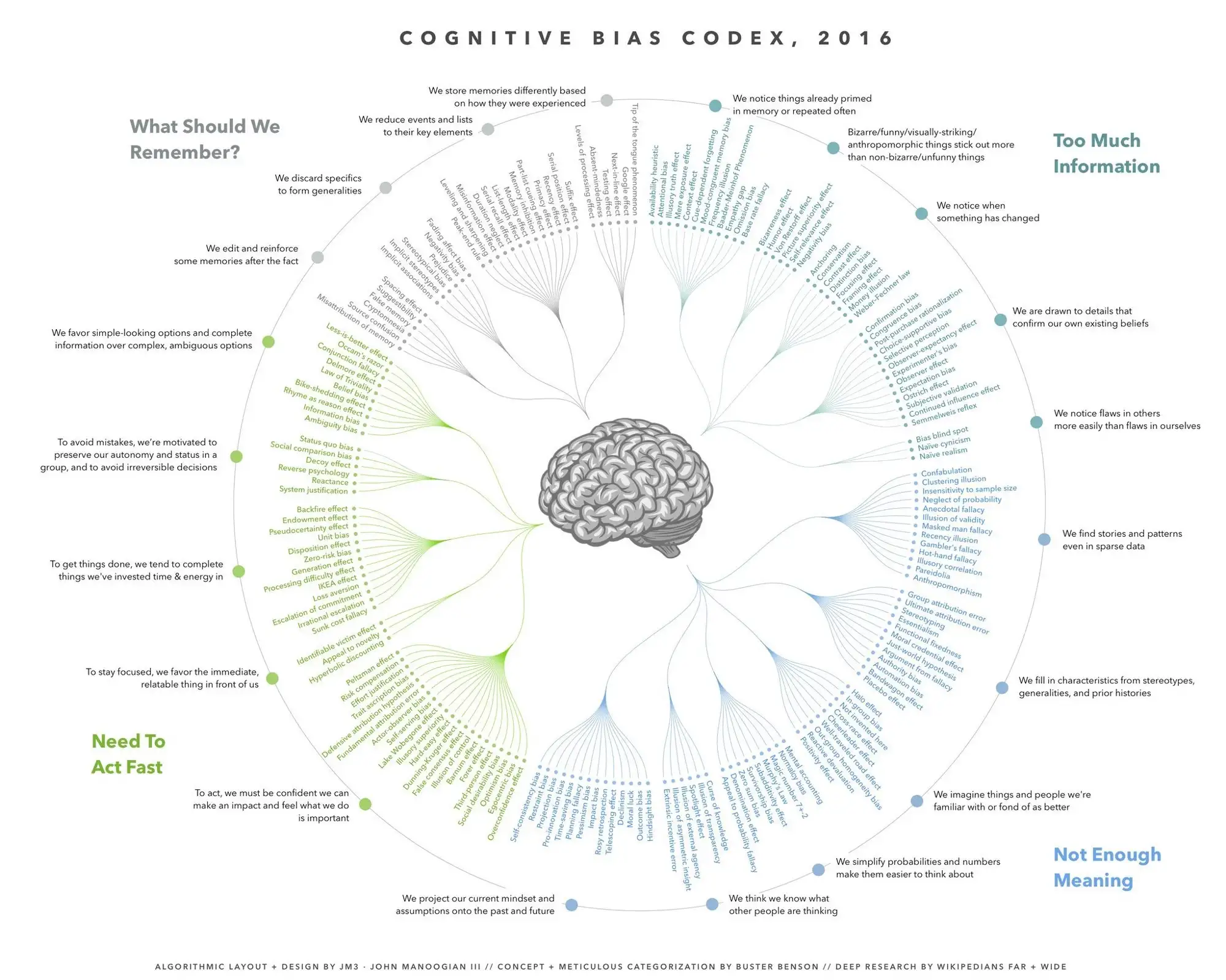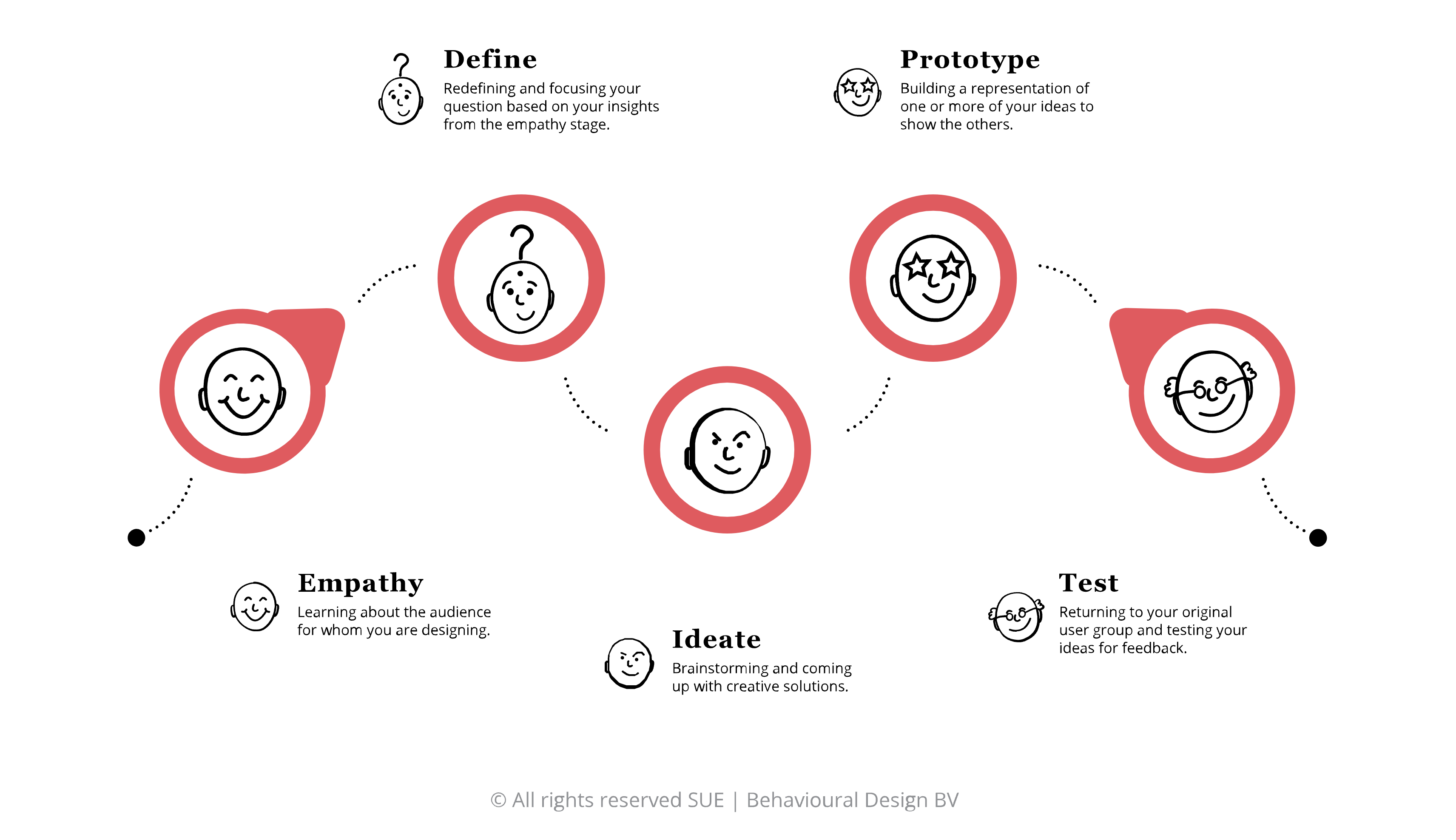Why do Cognitive Biases Matter in UX Design?
Cognitive biases are mental shortcuts that humans often use to simplify decision-making and process complex information.
While these shortcuts can be helpful in many situations, they can also lead to errors in judgment and decision-making.
For UX (User Experience) designers, understanding cognitive biases is crucial for creating designs that are effective, user-friendly, and accessible. In this blog post, we will explore what cognitive biases are, examine their impact on UX design, and discuss practical strategies to mitigate their effects.
Understanding Cognitive Biases
Cognitive biases are deeply ingrained patterns in human thinking. They arise because our brains are wired to conserve mental effort by simplifying information processing. While this efficiency can be beneficial, it often leads to skewed perceptions and flawed judgments. Recognizing these biases can help UX designers create products and services that align with real user behavior.
Common Types of Cognitive Biases in UX Design
Here are some of the most significant cognitive biases that impact UX design:
- Confirmation Bias
- Definition: The tendency to seek out information that confirms pre-existing beliefs while ignoring contradictory evidence.
- Example in UX: Users may overlook flaws in a design they already perceive as good, while focusing on aspects that align with their expectations.
- Sunk Cost Bias
- Definition: The tendency to continue investing in a failing project or idea due to the time, money, or effort already spent.
- Example in UX: Teams may persist with ineffective designs because of the resources invested in their development.
- Availability Heuristic
- Definition: The tendency to base decisions on information that is readily available rather than considering all relevant data.
- Example in UX: Users might judge a product’s quality based on the first review they see, even if it’s not representative of overall feedback.
How Cognitive Biases Affect UX Design
Cognitive biases influence the way users perceive and interact with products and services. They also impact the design process itself, as designers and stakeholders are not immune to these mental shortcuts. Below are some specific examples:
Impact on Users
- Overlooking Problems: Confirmation bias might lead users to ignore issues with a product because they are focused on finding features they expect or desire.
- Suboptimal Decisions: The availability heuristic might cause users to rely on incomplete information when making choices, leading to less-than-ideal outcomes.
- Resistance to Change: Sunk cost bias might prevent users from abandoning a tool or service, even if a better alternative exists.
Impact on Designers
- Design Blind Spots: Designers influenced by confirmation bias might ignore critical user feedback that contradicts their initial ideas.
- Inefficient Iteration: Teams might resist abandoning ineffective designs due to sunk cost bias, delaying necessary changes.
- Overemphasis on Initial Data: Relying too heavily on the first results of user research (availability heuristic) can lead to incomplete insights.
Strategies to Mitigate Cognitive Biases in UX Design
Recognizing cognitive biases is the first step. Here are actionable strategies to minimize their impact:
1. Provide Balanced and Complete Information
- How to Apply: Offer users a mix of positive and negative information about a product or service. For example, include both pros and cons in product descriptions or reviews.
- Benefits: Encourages users to form objective opinions and make informed decisions.
2. Conduct Diverse User Testing
- How to Apply: Test your designs with a wide range of users who bring different perspectives and experiences.
- Benefits: Reduces the risk of design blind spots by ensuring feedback isn’t limited to a homogeneous group.
3. Rely on Proven Design Patterns
- How to Apply: Use established design patterns that are familiar and effective for users, avoiding unnecessary complexity.
- Benefits: Minimizes confusion and cognitive load for users.
4. Promote Critical Thinking
- How to Apply: Encourage users to question and evaluate the information presented. For example, provide tools that allow users to compare products or visualize alternative outcomes.
- Benefits: Helps users overcome biases like the availability heuristic.
5. Optimize Communication
- How to Apply: Use clear, concise language and avoid jargon. Highlight key information and ensure call-to-action buttons are prominent and intuitive.
- Benefits: Reduces misunderstandings and improves decision-making.
6. Reevaluate and Iterate
- How to Apply: Regularly revisit your designs and decisions, challenging initial assumptions and incorporating new insights.
- Benefits: Mitigates sunk cost bias by fostering a culture of adaptability.
Real-World Examples of Cognitive Bias in UX
Confirmation Bias in Search Functionality
Many e-commerce websites display search results that prioritize popular items. While this reinforces user expectations, it may also prevent users from discovering less mainstream but equally relevant options. Balancing search algorithms to include diverse recommendations can counteract this bias.
Sunk Cost Bias in Project Management Tools
A team using an outdated project management tool may resist switching to a better platform because of the time invested in learning the old system. Offering seamless migration tools and robust onboarding can help alleviate this resistance.
Availability Heuristic in Online Reviews
Users often rely on the first few reviews they see, which may not be representative of overall feedback. Platforms like Amazon address this by highlighting “Most Helpful” reviews and displaying ratings breakdowns.
The Role of Empathy in Addressing Cognitive Biases
Empathy is a cornerstone of UX design. By deeply understanding user needs, emotions, and behaviors, designers can anticipate how cognitive biases might influence interactions. Empathy-driven design practices, such as creating user personas and journey maps, provide valuable context for addressing biases effectively.
Key Takeaways
- Cognitive biases are mental shortcuts that can influence both user behavior and design decisions.
- Understanding biases like confirmation bias, sunk cost bias, and the availability heuristic is essential for creating effective UX designs.
- UX designers can counteract biases by providing balanced information, testing with diverse users, using proven design patterns, and fostering critical thinking.
- Real-world examples highlight the importance of addressing cognitive biases in practical ways.
- Empathy and continuous iteration are vital for mitigating biases and improving user experiences.
By acknowledging and addressing cognitive biases, UX designers can create products and services that are not only functional but also intuitive and inclusive. Incorporating these insights into your design process will lead to more thoughtful and impactful user experiences.
Further Reading and Resources
- Nielsen Norman Group on Cognitive Biases
- Interaction Design Foundation’s Guide to Cognitive Biases in UX
- Psychology Today: Cognitive Biases Explained
- Smashing Magazine on Bias in UX Research
To continue learning about Cognitive Biases you should read this post “Flashcards to Learn 168 Cognitive Biases” and this one also “Cognitive bias cheat sheet“.

